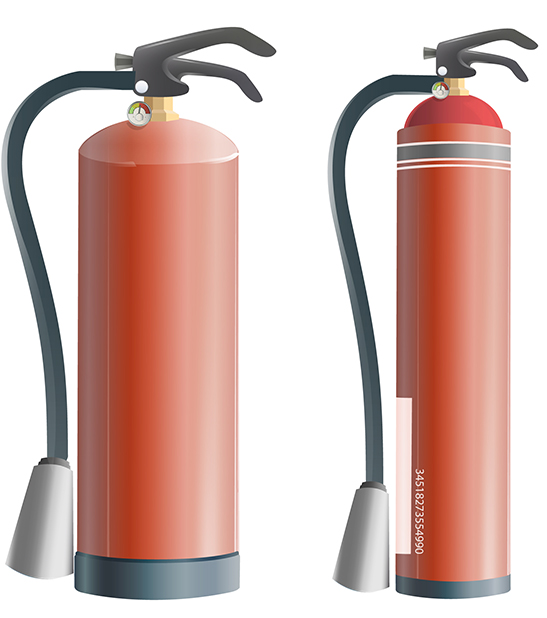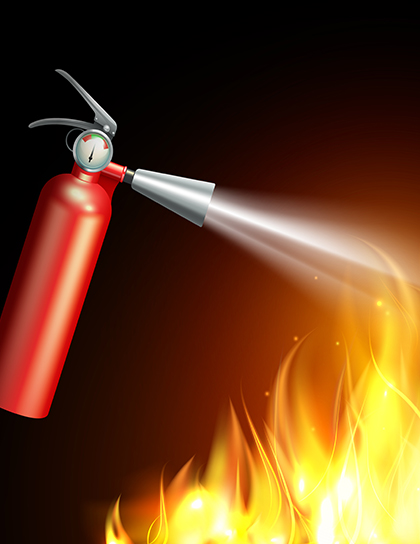
A fire extinguisher is a portable device used to suppress or extinguish small fires in emergency situations. Here are some key benefits and aspects of fire extinguishers.
Immediate Response: Fire extinguishers allow for immediate action when a small fire breaks out. This can prevent the fire from spreading and causing more extensive damage.
Versatility: Fire extinguishers are designed to tackle various types of fires, classified by the materials burning.
 Class A: Fires involving ordinary combustibles such as wood, paper, and cloth.
Class A: Fires involving ordinary combustibles such as wood, paper, and cloth. Class B: Fires involving flammable liquids like gasoline, oil, and grease.
Class B: Fires involving flammable liquids like gasoline, oil, and grease. Class C: Fires involving electrical equipment.
Class C: Fires involving electrical equipment. Class D: Fires involving combustible metals.
Class D: Fires involving combustible metals. Class K: Fires involving cooking oils and fats in commercial kitchens.
Class K: Fires involving cooking oils and fats in commercial kitchens.
Easy to Operate: Most fire extinguishers operate using a simple "PASS" technique:
 Pull the pin.
Pull the pin. Aim the nozzle at the base of the fire.
Aim the nozzle at the base of the fire. Squeeze the handle to release the extinguishing agent.
Squeeze the handle to release the extinguishing agent. Sweep the nozzle from side to side while aiming at the base of the flames.
Sweep the nozzle from side to side while aiming at the base of the flames.

Training in fire extinguisher use is straightforward and often provided to building occupants and staff. This familiarity ensures quick and effective response in emergency situations.
Fire extinguishers provide a safe means for individuals to intervene in a fire emergency before professional firefighters arrive. They allow occupants to attempt to control the fire while prioritizing personal safety and evacuation.
Many jurisdictions and building codes require the installation of fire extinguishers in specific locations and for specific types of occupancies. Compliance ensures buildings meet safety standards and reduces liability for property owners.
Fire extinguishers are relatively inexpensive compared to the potential costs of fire damage and business interruption. They offer a cost-effective means of mitigating fire risks within buildings.
The primary benefit of a fire extinguisher is its capability to suppress or extinguish small fires before they escalate, offering several advantages.
 Immediate Response
Immediate Response Versatility
Versatility Accessibility
Accessibility Ease of Use
Ease of Use
 Safety
Safety Regulatory Compliance
Regulatory Compliance Cost-Effective Fire Protection
Cost-Effective Fire Protection Peace of Mind
Peace of Mind


